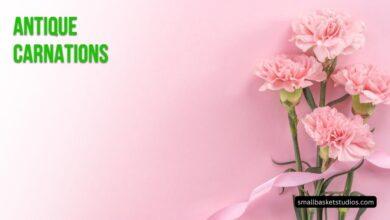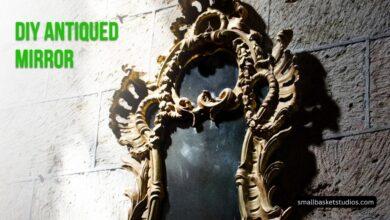Antique Tools For Pressing Clothes
In today’s world of wrinkle-resistant fabrics and high-tech steam irons, it’s easy to forget the long and fascinating history of clothes pressing. For centuries, people have been developing ingenious tools and techniques to keep their garments crisp and presentable. This article delves into the world of antique tools for pressing clothes, exploring their evolution, variety, and the craftsmanship that went into creating these functional works of art.
From prehistoric times to the early 20th century, we’ll trace the development of pressing tools, examining how they reflect the technological advancements and societal changes of their eras. Whether you’re a history buff, a vintage clothing enthusiast, or simply curious about the everyday objects of the past, join us on this journey through the wrinkles of time.
The Early Days: Prehistoric to Ancient Civilizations
Smoothing Stones: Nature’s First Iron
Long before the invention of metal irons, our ancestors used simple tools to smooth out wrinkles in their clothing. Archaeological evidence suggests that as far back as 50,000 years ago, early humans were using smooth, flat stones to press animal hides and primitive textiles.
- Function: These stones, often river rocks or specially shaped pieces of wood, were heated in fire and then used to smooth out wrinkles and creases.
- Significance: This technique marks the beginning of humanity’s quest for wrinkle-free clothing, demonstrating our innate desire for aesthetically pleasing and well-maintained garments.
Ancient Egyptian Pressing Tools
The ancient Egyptians, known for their advancements in various fields, also made significant contributions to the art of clothes pressing.
- Copper Pressing Tools: Around 3000 BCE, Egyptians began using flat-bottomed copper vessels filled with hot water or heated sand to press their linen garments.
- Specialized Designs: Some of these tools featured long handles to protect the user’s hands from the heat, while others had decorative elements that reflected the Egyptians’ love for aesthetics.
Roman Innovations
The Roman Empire, with its emphasis on cleanliness and presentation, further refined clothes pressing techniques.
- Introduction of the Mangle: Romans developed the mangle, a wooden frame with rollers used to press large items like sheets and tablecloths.
- Use of Glass: Smooth glass objects were sometimes used to press delicate fabrics, offering a gentler alternative to metal tools.
The Middle Ages: The Rise of the Sad Iron
The Birth of the Sad Iron
The Middle Ages saw the emergence of what would become the dominant pressing tool for centuries: the sad iron.
- Etymology: The term “sad” in this context comes from an Old English word meaning “solid” or “heavy,” reflecting the substantial weight of these irons.
- Basic Design: Sad irons were typically made of cast iron, with a flat bottom for pressing and a handle for maneuvering.
Variations and Innovations
As the use of sad irons spread across Europe, various designs emerged to address different needs and preferences.
- Box Irons: These hollow irons could be filled with hot coals, providing a more consistent heat source.
- Charcoal Irons: Similar to box irons but with small holes for ventilation to keep the charcoal burning.
- Slug Irons: These featured removable metal slugs that could be heated separately and inserted into the iron body.
The Craftsmanship of Medieval Irons
Medieval blacksmiths often imbued sad irons with artistic touches, turning these utilitarian objects into works of art.
- Decorative Handles: Many irons featured intricately carved wooden handles or ornate metal work.
- Engraved Designs: Some irons bore engravings of family crests, religious symbols, or decorative patterns.
The Industrial Revolution: Mechanization and Mass Production
The Impact of Cast Iron Manufacturing
The Industrial Revolution brought significant changes to the production and design of clothes pressing tools.
- Mass Production: The ability to mass-produce cast iron led to more affordable and widely available irons.
- Standardization: While earlier irons varied greatly in size and weight, industrial production led to more standardized designs.
The Introduction of Detachable Handles
One of the most significant innovations of this era was the development of irons with detachable handles.
- Advantage: This design allowed users to heat multiple iron bases while using a single handle, increasing efficiency.
- Popular Brands: Companies like Potts and Dover became household names with their patented detachable handle designs.
The Rise of Specialized Irons
The 19th century saw an explosion of specialized irons designed for specific tasks or garments.
- Goffering Irons: Used to create ruffles and pleats in clothing and linens.
- Polishing Irons: Designed with a rounded bottom to add shine to starched collars and cuffs.
- Fluting Irons: Created to press small, delicate items like lace and ruffles.
The Victorian Era: The Golden Age of Sad Irons
Ornate Designs and Status Symbols
The Victorian period, known for its emphasis on ornamentation, saw sad irons become more than just functional tools.
- Decorative Elements: Many irons featured elaborate designs, including floral motifs, animal shapes, and intricate patterns.
- Materials: While cast iron remained the primary material, some high-end irons were made with brass, nickel, or even silver plating.
The Mrs. Potts’ Sad Iron
One of the most iconic designs of this era was the Mrs. Potts’ Sad Iron, patented in 1871.
- Unique Feature: This iron had a pointed front and back, allowing users to iron in both directions without lifting the iron.
- Popularity: The Mrs. Potts’ design was widely imitated and remained popular well into the 20th century.
Technological Advancements
The late 19th century brought several innovations that improved the functionality of sad irons.
- Asbestos-Lined Sad Irons: These irons featured an asbestos lining to retain heat longer (though we now know the dangers of asbestos).
- Self-Heating Irons: Some models incorporated small fuel tanks and burners, allowing for continuous heating.
- Temperature Indicators: More advanced irons began to feature rudimentary temperature indicators to prevent scorching.
The Early 20th Century: The Transition to Electric
The Dawn of Electric Irons
The invention of the electric iron in the early 1900s marked the beginning of the end for traditional sad irons.
- First Patent: In 1882, Henry W. Seely patented the electric flatiron, though it wouldn’t become commercially viable for several more years.
- Rapid Adoption: By the 1920s, electric irons were becoming commonplace in urban households with access to electricity.
The Coexistence of Old and New
Despite the rise of electric irons, many households continued to use traditional sad irons well into the 20th century.
- Rural Areas: In places without reliable electricity, sad irons remained the primary pressing tool.
- Nostalgia and Tradition: Some people preferred the familiar weight and feel of sad irons, even as electric models became more prevalent.
The Last Innovations in Sad Iron Design
Even as electric irons gained popularity, inventors continued to improve upon the traditional sad iron design.
- Improved Handles: Ergonomic designs and heat-resistant materials made sad irons more comfortable to use.
- Better Heat Distribution: Advances in metallurgy led to irons that heated more evenly and retained heat longer.
- Safety Features: Some late models incorporated features to prevent accidental burns and fires.
Collecting and Preserving Antique Pressing Tools
The Appeal of Antique Irons
In recent decades, there has been a growing interest in collecting antique clothes pressing tools.
- Historical Value: These tools offer tangible connections to domestic life in past eras.
- Artistic Merit: Many antique irons showcase beautiful craftsmanship and design.
- Investment Potential: Rare or exceptionally well-preserved irons can be valuable collectibles.
Tips for Collectors
For those interested in starting a collection of antique pressing tools, consider the following advice:
- Research: Familiarize yourself with different types, eras, and manufacturers of antique irons.
- Condition Matters: Look for irons in good condition, with minimal rust or damage.
- Authenticity: Be wary of reproductions; learn to identify genuine antiques.
- Diverse Collection: Consider collecting a range of tools from different periods and for various purposes.
Preserving Antique Irons
Proper care is essential to maintain the condition and value of antique pressing tools.
- Cleaning: Gently clean irons with appropriate methods, avoiding harsh chemicals that could damage the metal or finish.
- Storage: Store irons in a dry environment to prevent rust, and use padding to protect ornate or delicate parts.
- Display: Consider creating a dedicated display area to showcase your collection while protecting it from damage.
The Legacy of Antique Pressing Tools
Cultural Significance
Antique clothes pressing tools are more than just obsolete household items; they represent important aspects of social and technological history.
- Gender Roles: The evolution of these tools reflects changing attitudes towards domestic labor and gender roles.
- Technological Progress: Pressing tools showcase the progression from simple manual tools to complex, powered appliances.
- Aesthetic Evolution: The designs of these tools mirror broader trends in art and industrial design.
Influence on Modern Design
While modern irons bear little resemblance to their antique counterparts, elements of traditional designs continue to influence contemporary products.
- Ergonomics: The quest for comfortable, efficient handling seen in antique irons continues in modern designs.
- Temperature Control: Today’s precise temperature settings evolved from early attempts at heat management in sad irons.
- Aesthetic Touches: Some modern irons incorporate retro design elements as a nod to their historical predecessors.
FAQ: Antique Tools for Pressing Clothes
Q: What is the oldest known tool for pressing clothes?
A: The oldest known tools for pressing clothes are smoothing stones, used as far back as 50,000 years ago by early humans to smooth animal hides and primitive textiles.
Q: Why are they called “sad irons”?
A: The term “sad” in “sad iron” comes from an Old English word meaning “solid” or “heavy,” referring to the substantial weight of these irons.
Q: When was the electric iron invented?
A: The electric iron was first patented by Henry W. Seely in 1882, but it didn’t become commercially viable until the early 1900s.
Q: Are antique irons safe to use today?
A: While some antique irons can still be used, it’s generally not recommended due to safety concerns. Many lack modern safety features and may pose risks of burns or fire.
Q: What makes an antique iron valuable to collectors?
A: Factors that can make an antique iron valuable include rarity, condition, unique design features, historical significance, and the reputation of the manufacturer.
Q: How can I tell if an antique iron is authentic?
A: Authentic antique irons often show signs of age and use, have appropriate markings for their era, and are made with materials and techniques consistent with their purported age. Consulting with experts or reference guides can help verify authenticity.
Q: What was the purpose of irons with detachable handles?
A: Irons with detachable handles allowed users to heat multiple iron bases while using a single handle, increasing efficiency and reducing the risk of burns.
Q: How were clothes pressed before the invention of irons?
A: Before irons, people used various methods including smoothing stones, heated pans filled with coals, and wooden or glass smoothing tools.
Conclusion
The history of antique tools for pressing clothes is a fascinating journey through human ingenuity and the ever-present desire for well-maintained garments. From simple smoothing stones to ornate sad irons, these tools reflect the technological advancements, artistic sensibilities, and social norms of their respective eras.
As we’ve explored in this article, the evolution of pressing tools mirrors broader historical trends, from the rise of mass production during the Industrial Revolution to the electrification of households in the early 20th century. Today, these antique tools serve not only as collectibles but as tangible links to our past, offering insights into the daily lives of our ancestors.
While modern electric irons have largely replaced these antique tools in everyday use, the legacy of sad irons and their predecessors lives on. They remind us of the craftsmanship of bygone eras and the ingenuity that went into solving everyday problems. As we continue to innovate and develop new technologies, it’s worth remembering and appreciating the long history of human effort that has gone into something as seemingly simple as pressing our clothes.



